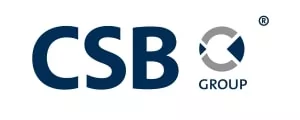- within Intellectual Property, Immigration, Media, Telecoms, IT and Entertainment topic(s)
- in European Union
The European Union Intellectual Property Office (the "EUIPO") has recently confirmed that services relating to virtual goods and non-fungible tokens (NFTs) will now be classified in line with the established principles of classification for services. Therefore these terms will now be stipulated in the new version of the Nice Classification (12th edition) which is applicable from 1st January 2023. The reason for including such terms is due to the increase in trade mark applications which has been filed over recent years with the EUIPO covering virtual goods and NFTs.
The EUIPO makes clear that class 9 is appropriate for virtual goods, given that they are treated as digital content or images. The EUIPO has stated however that a classification for simply "virtual goods" alone would not be considered to have a sufficient level of clarity or precision. It's therefore essential that additional detail is provided which specifies the content to which the goods relate. For example: "downloadable virtual goods, namely, computer programs featuring footwear and clothing for use online and in online virtual worlds" in class 9.
It has also been confirmed by the EUIPO that "downloadable digital files authenticated by non-fungible tokens" will be incorporated into class 9 of the 12th edition of the Nice Classification. The EUIPO treats NFTs as unique digital certificates registered in a blockchain, which authenticate digital items but are distinct from those digital items. However, with the case of virtual goods, the EUIPO insists that "non-fungible tokens" alone would not be considered adequate and therefore, the specific type of digital item authenticated must be specified. For example: "downloadable music authenticated by NFTs" in class 9 or "providing an online virtual environment for trading virtual art and virtual art tokens" in class 35.
The surge in these types of applications over recent years clearly reflects the fact that NFTs and virtual goods are now being recognised as a valuable item for businesses operating in the field.
The Nice Classification is divided into a total of 45 classes, 34 of which are of goods and 11 of services. Each class contains class headings, explanatory notes and an extensive list of various goods and service terms which are accepted by the trade mark offices as sufficiently defined and can therefore be used in the application procedure without any problems. The Nice Classification is revised regularly so as to continuously adapt to current developments, with a new version every year and a new edition every five years.
The content of this article is intended to provide a general guide to the subject matter. Specialist advice should be sought about your specific circumstances.


